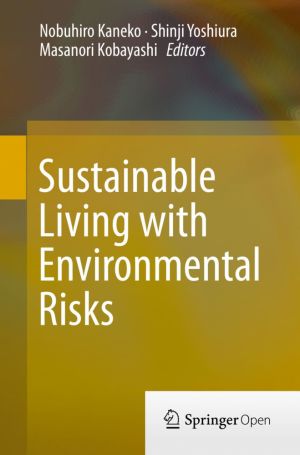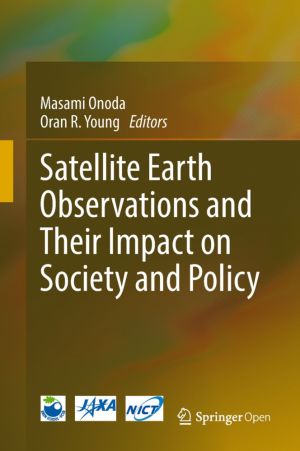Living Earth Community
Multiple Ways of Being and Knowing
by Sam Mickey, Mary Evelyn Tucker, John Grim
DescriptionTable of ContentsDetailsHashtagsReport an issue
This anthology examines the interplay between Nature and Culture in the setting of our current age of ecological crisis, stressing the importance of addressing these ecological crises occurring around the planet through multiple perspectives. These perspectives are exemplified through diverse case studies - from the political and ethical implications of thinking with forests, to the capacity of storytelling to motivate action, to the worldview of the Indigenous Okanagan community in British Columbia.
Living Earth Community: Multiple Ways of Being and Knowing synthesizes insights from across a range of academic fields, and highlights the potential for synergy between disciplinary approaches and inquiries. This anthology is essential reading not only for researchers and students, but for anyone interested in the ways in which humans interact with the community of life on Earth, especially during this current period of environmental emergency. 






Book Description
Living Earth Community: Multiple Ways of Being and Knowing is a celebration of the diversity of ways in which humans can relate to the world around them, and an invitation to its readers to partake in planetary coexistence. Innovative, informative, and highly accessible, this interdisciplinary anthology of essays brings together scholars, writers and educators across the sciences and humanities, in a collaborative effort to illuminate the different ways of being in the world and the different kinds of knowledge they entail - from the ecological knowledge of Indigenous communities, to the scientific knowledge of a biologist and the embodied knowledge communicated through storytelling.This anthology examines the interplay between Nature and Culture in the setting of our current age of ecological crisis, stressing the importance of addressing these ecological crises occurring around the planet through multiple perspectives. These perspectives are exemplified through diverse case studies - from the political and ethical implications of thinking with forests, to the capacity of storytelling to motivate action, to the worldview of the Indigenous Okanagan community in British Columbia.
Living Earth Community: Multiple Ways of Being and Knowing synthesizes insights from across a range of academic fields, and highlights the potential for synergy between disciplinary approaches and inquiries. This anthology is essential reading not only for researchers and students, but for anyone interested in the ways in which humans interact with the community of life on Earth, especially during this current period of environmental emergency.
This open book is licensed under a Creative Commons License (CC BY-NC-ND). You can download Living Earth Community ebook for free in PDF format (19.5 MB).
Table of Contents
Section I
Presences in the More-Than-Human World
Chapter 1
Creaturely Migrations on a Breathing Planet: Some Reflections
Chapter 2
Learning a Dead Birdsong: Hopes' echoEscape.1 in 'The Place Where You Go to Listen'
Chapter 3
Humilities, Animalities, and Self-Actualizations in a Living Earth Community
Section II
Thinking in Latin American Forests
Chapter 4
Anthropology as Cosmic Diplomacy: Toward an Ecological Ethics for Times of Environmental Fragmentation
Chapter 5
Reanimating the World: Amazonian Shamanism
Chapter 6
The Obligations of a Biologist and Eden No More
Section III
Practices from Contemporary Asian Traditions and Ecology
Chapter 7
Fluid Histories: Oceans as Metaphor and the Nature of History
Chapter 8
Affectual Insight: Love as a Way of Being and Knowing
Chapter 9
Confucian Cosmology and Ecological Ethics: Qi, Li, and the Role of the Human
Section IV
Storytelling: Blending Ecology and Humanities
Chapter 10
Contemplative Studies of the 'Natural' World
Chapter 11
Science, Storytelling, and Students: The National Geographic Society's On Campus Initiative
Chapter 12
Listening for Coastal Futures: The Conservatory Project
Chapter 13
Imaginal Ecology
Section V
Relationships of Resilience within Indigenous Lands
Chapter 14
An Okanagan Worldview of Society
Chapter 15
Indigenous Language Resurgence and the Living Earth Community
Chapter 16
Sensing, Minding, and Creating
Chapter 17
Unsettling the Land: Indigeneity, Ontology, and Hybridity
Section VI
The Weave of Earth and Cosmos
Chapter 18
Gaia and a Second Axial Age
Chapter 19
The Human Quest to Live in a Cosmos
Chapter 20
Learning to Weave Earth and Cosmos
Book Details
Title
Living Earth Community
Publisher
Open Book Publishers
Published
2020
Pages
288
Edition
1
Language
English
ISBN13
9781783748037
ISBN10
1783748036
ISBN13 Digital
9781783748051
ISBN10 Digital
1783748052
PDF Size
19.5 MB
License

Related Books

Over the past decades, rapid developments in digital and sensing technologies, such as the Cloud, Web and Internet of Things, have dramatically changed the way we live and work. The digital transformation is revolutionizing our ability to monitor our planet and transforming the way we access, process and exploit Earth Observation data from satell...

We are not free from environmental risks that accompany the development of human societies. Modern economic development has accelerated environmental pollution, caused loss of natural habitats, and modified landscapes. These environmental changes have impacted natural systems: water and heat circulation, nutrient cycling, and biodiversity. These ch...

This book outlines the challenges of supporting the health and wellbeing of older adults around the world and offers examples of solutions designed by stakeholders, healthcare providers, and public, private and nonprofit organizations in the United States. The solutions presented address challenges including: providing person-centered long-term car...

The result of a workshop bringing together an international advisory board of experts in science, satellite technologies, industry innovations, and public policy, this book addresses the current and future roles of satellite Earth observations in solving large-scale environmental problems. The book showcases the results of engaging distinct communi...

This book collects 4 keynote and 15 theme lectures presented at the 2nd European Conference on Earthquake Engineering and Seismology (2ECEES), held in Istanbul, Turkey, from August 24 to 29, 2014. The conference was organized by the Turkish Earthquake Foundation - Earthquake Engineering Committee and Prime Ministry, Disaster and Emergency Managemen...

This open access book offers a summary of the development of Digital Earth over the past twenty years. By reviewing the initial vision of Digital Earth, the evolution of that vision, the relevant key technologies, and the role of Digital Earth in helping people respond to global challenges, this publication reveals how and why Digital Earth is beco...

